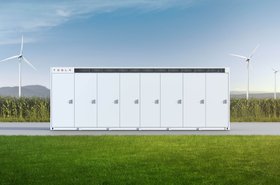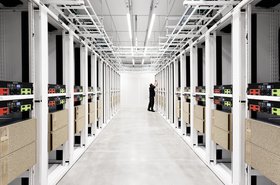The data center is currently evolving faster than ever, facing extreme pressure to keep up with the rapidly changing behaviour and growing demands of consumers and businesses. And this global thirst for information shows no signs of abating at any time in the future, given that upcoming new technologies that are likely to become commonplace all over the world are expected to result in exponential data growth.
To understand the forces behind this demand, one should look back at how much the wider technology industry has changed during the previous ten years. 2010 was the year the very first iPad tablet launched, into an environment where smartphones were still far from commonplace and many places could still be considered lucky to have mere 3G mobile data connectivity.
Now that faster connections and more capable devices are commonplace, people dedicate more time to online services, across a multitude of categories that stretch from online shopping to gaming and streaming video. Behind each of these services there is a need to process data and serve content, and that creates huge demand for facilities to provide that data.
Economies of scale
The standard data center model has been designed to take advantage of economies of scale. Large monolithic, central facilities have become commonplace, intended to scale up with the expected linear demand.
But as the last year has shown, that demand is not necessarily linear, and a limited number of central data hosts may not be the right model for the change in data demand in the near future.
5G is predicted to lead to a surge in tomorrow’s data demands. For the same reasons that people adopted more digital services in the previous ten years, the next ten years will see significantly faster connection speeds, even more data consumption, more content being served and a massive increase in demand for data processing. Not all providers currently appreciate the potential scale of this increase.
Demand for cloud-based backend systems is replacing on-prem IT services. It makes more sense, freeing companies of the need to dedicate resources to physical infrastructure and instead managing those systems remotely. All this pressure on the cloud means more data center demand.
Additionally IoT technology is maturing, moving beyond being a niche category that’s mainly appreciated by early adopters who want to demonstrate their lights switching on and off with a voice command. The smart home, car, street and city are generating new streams with terabytes of data from sensors and cameras that are certain to impact the way we work and live.
On top of these major examples of forthcoming digital transformation, the last year saw a global change in behaviour with people working from home during the day, less time spent socialising and more time consuming content via digital services in the evening. This enormous spike in data consumption seems to have been weathered by existing data centers without any major hiccups - even though at one point streaming video quality had to be reduced by major providers to ease the load on the UK’s internet backbone.
Faced with this data spike and new trends of working, the advantages of Edge Computing have allowed it to take centre stage. Working remotely, with teams communicating and integrating across wider geographical distances utilising cloud-native digital systems is likely to drive a push demand for micro data centers at the Edge.
Localized micro data centers are particularly useful in large urban areas - but also in less common forms in developing countries and rural areas. 5G towers with a minute data center placed “on the pole” have even been attempted to handle purely local data.
A challenge with many current popular digital services is over-reliance on US data centers, simply because the UK does not currently yet have the local capacity to support the demand of applications such as constant video streaming, pushing that data into a new geographical zone and potential privacy issues, as well as demand for transatlantic bandwidth.
Environmental concerns are a big factor that will affect data center growth in the coming years as well. But the current ecological impact of data centers themselves, with the high power and cooling cost, will be largely offset by the savings of moving businesses and organizations to smart technology.
Many people see increased data consumption has having a negative environmental impact. But by enabling new possibilities for more efficient smart manufacturing and production, smart cities and the potential to further optimise the data center itself - through increased reliance on renewable energy and reduced consumption, we should see a net positive environmental impact from this switch.
This could be helped by building future data centers with optimized capacity, improved all-round performance, and switching storage medium from SAS to scalable flash technology in SSDs. Modular construction for more efficient cooling will require new data center design and therefore new skills.
In its most extreme potential form, data centers could end up becoming large numbers of black boxes serving only a limited number of homes. 5G and Edge are key to this becoming a reality.
On a shorter timescale though, we’re all certainly looking forward to moving on from the pandemic and towards a global economic recovery. A big spike in data demand is likely to occur when businesses ramp up again.
This could be the catalyst for the aforementioned shift to Edge and localized data, by investing in refreshed technology and making use of faster NVMe SSD performance, which reduces physical footprint and simplifies power and thermal requirements.





